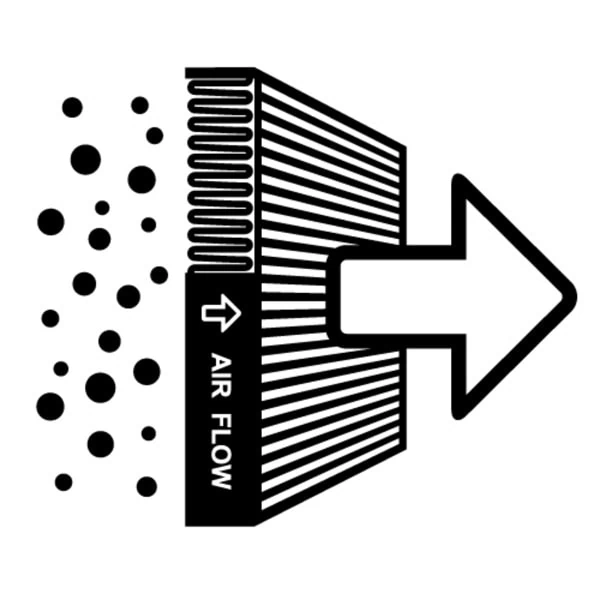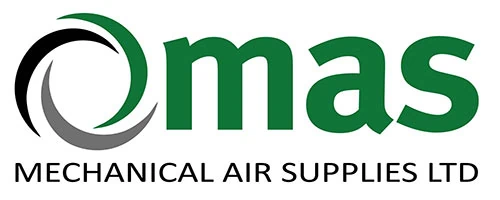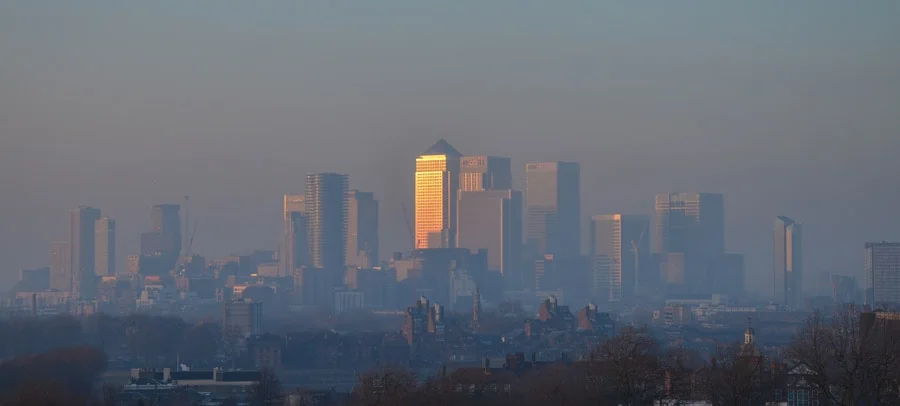Living in an AQMA? Should you be thinking about installing a NOx filter?
Here is a brief summary of our introduction to NOx filters:
- What is NOx?
- What creates NOx?
- Is NOx just an outside problem?
- Can my MVHR unit remove NOx?
- How do I target NOx removal in my Home?
- How does a NOx filter work?
Lets take a quick look at London, the great capital of our land, bursting with culture and history, and during certain conditions shrouded by pollution. Our wonderful city is classified as an AQMA (Air Quality Management Area), in short pollution levels breach legal limits.
As individuals we have very little control over the quality of the outside air, however we can take measures to improve the air that we breathe when we are inside our homes. One way is to install a NOx filter as part of the intake on your MVHR system.
WHAT IS NOx?
We have got SMOG, a cocktail of noxious gasses, of which the most abundant are nitric oxide (NO) and nitrogen dioxide (NO2). When we talk about air pollution these two together are referred to as oxides of nitrogen (NOx). Take a look at this article on Nitrogen Oxide (NOx) Pollution for a more in depth look into this common irritant.
What Creates NOx?

NOx isn’t going to disappear anytime soon, after all what is the viable “industry” alternative to fossil fuel.
Is NOx just an outside problem?
NOx can also become a problem in your home, if you live by a busy road, or in a town this silent killer is likely to be surrounding you and the chances are that NOx will be present in your home, possibly at levels that are higher than the recommended acceptable levels. Suggestions are that the levels of air pollution in our homes are about 5 times greater than that of the levels outside (this also includes other pollutants, not just N0x).
It kind of makes sense that levels are so high, after all our humble dwellings have become sealed units, double glazed windows are shut tight for security, trickle vents have all but disappeared & many people turn of the extract fans as they are noisy, all of this can contribute to the build up of indoor pollution. It is important to note that if you do have an MVHR unit installed it is very likely that it is not designed to cope with the removal of gasses.
Without NOx filters, it is possible that your MVHR unit could be pumping in outside pollution.
Can my MVHR unit remove NOx?
MVHR units will have a method of filtration, but when it comes to the particles that you are trying to target there isn’t a one size fits all solution. Filters are graded according to the size of airborne particle that you want to reduce in your home.
Previously in HVAC speak, filter classes were broken down into the different types which ranged from G1 to F9 (G1 = Big particles F9 = Small particles). In 2017 the International Organization for Standardization re-classified them into 4 classes (to be fully adopted as an industry standard mid 2018). These new classes are more suitable to target the type of particle that you want to filter out. In simplified form the classification works as follows:
ePM10 – Pollen
ePM2.5 – Bacteria, mould and fine dust such as toner dust, fine diesel particulate.
ePM1 – Viruses & exhaust gases.
As mentioned this is a simplified breakdown, ISO 16890 goes into the classification of filters in a bit more detail.
It is most likely that the filter on your MVHR unit is only going to tackle the airborne particles in the ePM10 & ePM2.5 classification (G4-F7 in old money).
In order to filter out NOx your are going to need a filter that is in the ePM1 classification.
How do I target NOx removal in my home?
To target NOx you are going to need a specific filter. This is an add-on to the MVHR system and is specifically designed to reduce NOx that enters your home to acceptable levels. The filter box is installed on the intake of the ventilation system, before the air passes through an MVHR unit.
Currently, it is only a recommendation that new homes in an AQMA should have a NOx filter installed. Therefore it is highly likely that you won’t have one, unfortunately recommendations are often bypassed when considering costs for the construction of new homes.
How does a NOx filter work?

The filter box and filters are specifically designed to suit the volume of air that your MVHR unit can move. The intake air needs to be passing through the filter at a slow enough rate to give the activated carbon (and other chemicals) time to react and to remove these noxious oxides of nitrogen (AKA NOx).
Do you need help in identifying the right NOx filter for your ventilation system?
We are real people at MAS and we have a wealth of knowledge gained over 25 years of service to our customers. You can talk to our technical staff at any time to discuss your requirements and we can help identify the right NOx filter for your home. Call one of our branches today

